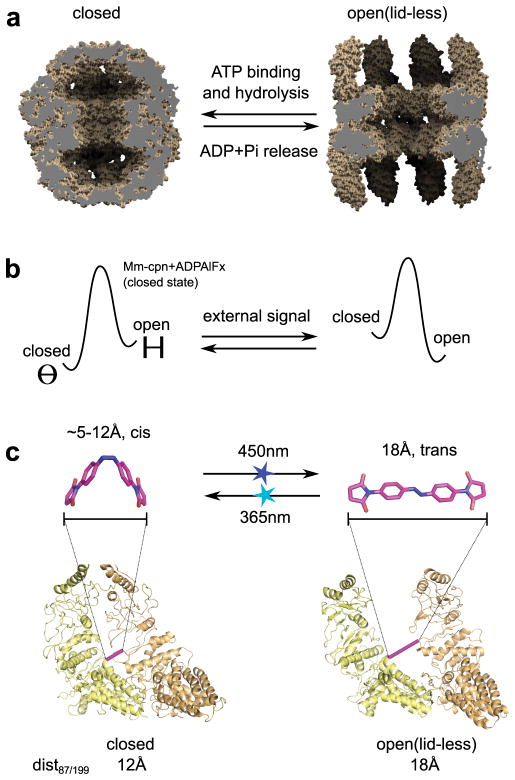Fig. 1.
Design strategy to control the shape transition of Mm-cpn with light by reversibly switching interatomic distances in the assembly. a Models derived from cryo-EM data of the atomic structure of Mm-cpn in the closed state (pdb code 3IYE9) and the open state of a truncated Mm-cpn construct missing the built-in lid (residues 241–267 replaced by a 4 residue linker, pdb code 3IYF9) illustrating the shape change of Mm-cpn, which in the natural system is dependent on ATP binding, hydrolysis and ADP/phosphate (Pi) release. b Design strategy for external control of the conformation of Mm-cpn by selective perturbation of the equilibrium between the closed (Θ symbol) and open (H symbol) states. c Molecular structure of the crosslinker ABDM in the 2 isomerization states cis and trans (upper panels, models created with the software Avogadro) and crosslinking site derived from the computational screen (lower panels). Shown are backbone models of two neighbouring Mm-cpn subunits in the closed and open states (as indicated). Bars connect the Cα atoms of the crosslinked residues in the mutant ΔC/K87C/S199C (pink) and dist87199 is the expected distance for the side chain sulphur atoms of an engineered cysteine at both positions. Light pulses that trigger the ABDM cis-trans (450nm) or the trans-cis isomerization (365nm) are indicated by blue or cyan stars, respectively.

